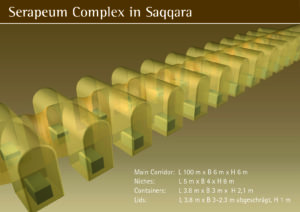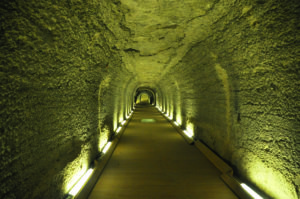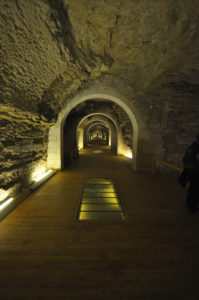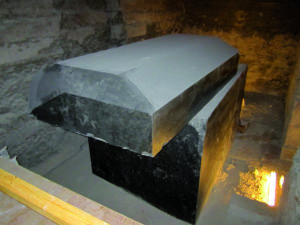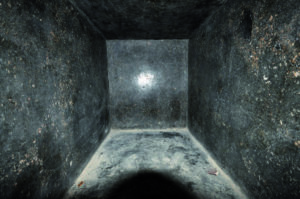“Serapeum” in Saqqara
A mysterious megalithic complex extending over 100 meters / 328.01 feet, which is accessed through two small side entrances. The core was formed of a 6 meter / 19.7 feet high dome arched corridor from which 12 niches extend on each side. In each of these 24 niches stands a granite container, each on with its own cover. These monolithic containers measure 3.8 meters / 12.5 feet long, 2.3 meters / 7.6 feet wide and 2.1 meters / 6.9 feet high (without cover). The long sides are .4 meters / 1.3 feet thick; the short sides are .3 meters / 1 foot thick, while the floor of each container is .3 to .4 meters / 1 to 1.3 feet feet thick. The total volume of the inner room is 8m3 / 282.5 cubic feet, which equal an effective within each container of 11m3 / 388.4 cubic feet. With a specific weight of 2.8 t/m3, this means that each container weighs around 30 tons, plus nearly 25 tons more for the 1 meter / 3.9 foot thick cover.
Egyptologists gave this complex its name because they assumed that holy Serapis bulls were entombed here (although it has been proven that the containers were empty when discovered by August Mariette in the year 1852). While we were conducting our own research in Saqqara in October 2006, the entire complex appeared to be a massive construction area. The Egyptian government was in the process of installing steel beams to prop up the ceiling construction.
This is an excerpt from the book GIZA LEGACY.


